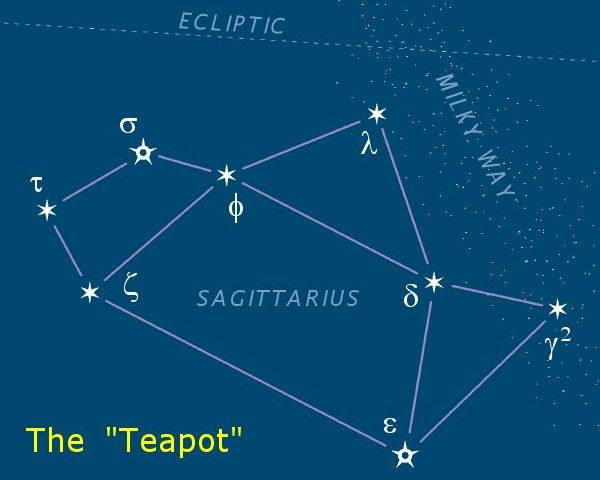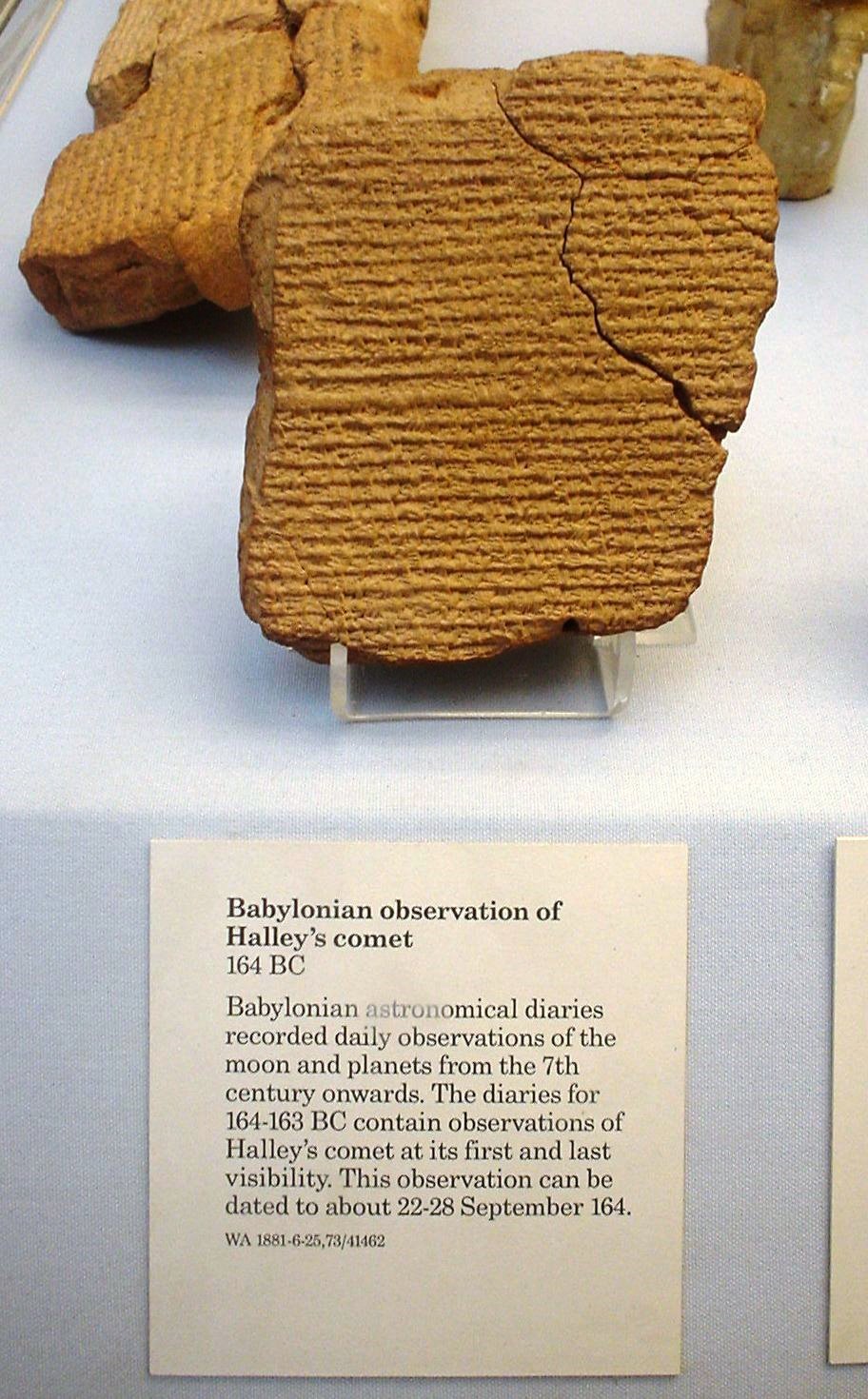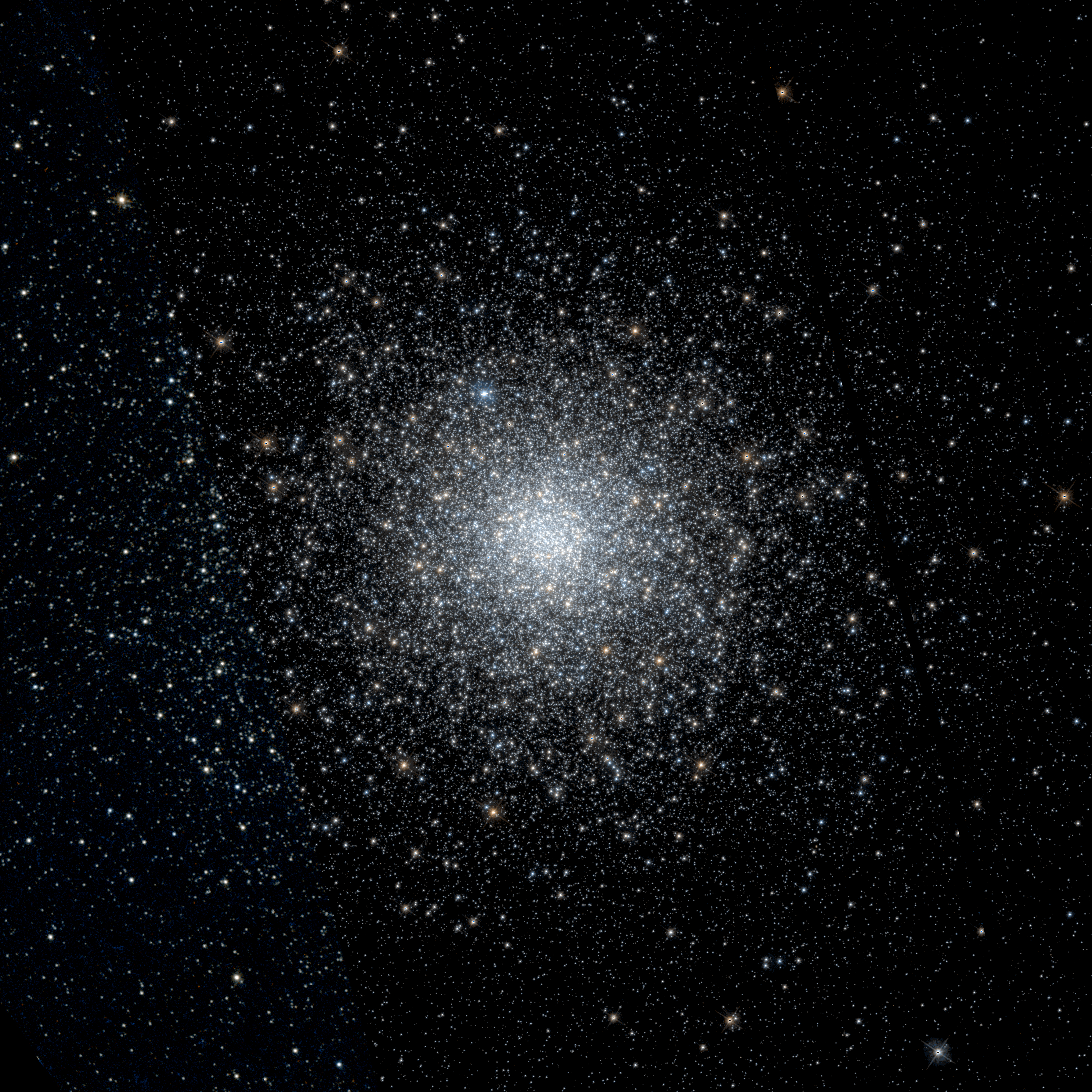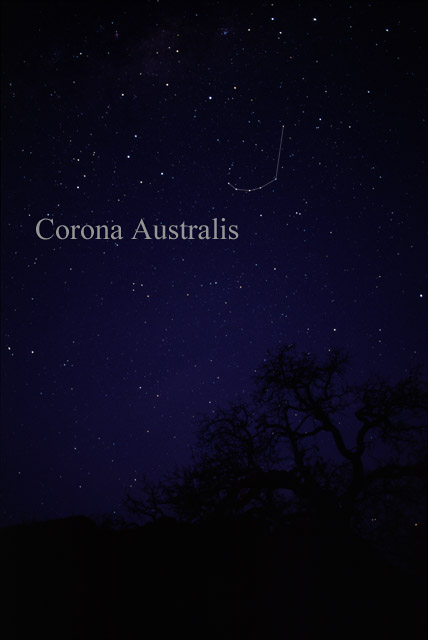|
NGC 6723
NGC 6723 is a globular cluster in the constellation Sagittarius. Its magnitude is given as between 6 and 6.8, and its diameter is between 7 and 11 arcminutes. It is a class VII cluster with stars of magnitude 14 and dimmer. It is near the border of Sagittarius and Corona Australis. Unlike common globular clusters, NGC 6723 has an enhanced metallicity and a large fraction of younger stars, with primordial stars accounting for only 0.363 % of the total. References * Robert Burnham Jr Robert Burnham Jr. (June 16, 1931 – March 20, 1993) was an American astronomer, best known for writing the classic three-volume ''Burnham's Celestial Handbook''. He is the discoverer of numerous asteroids including the Mars crossing asteroid 3 ..., ''Burnham's Celestial Handbook: An observer's guide to the universe beyond the solar system'', vol 3, p. 1558 External links * * NGC 6723 Globular clusters Sagittarius (constellation) 6723 {{star-cluster-stub ... [...More Info...] [...Related Items...] OR: [Wikipedia] [Google] [Baidu] |
New General Catalogue
The ''New General Catalogue of Nebulae and Clusters of Stars'' (abbreviated NGC) is an astronomical catalog, astronomical catalogue of deep-sky objects compiled by John Louis Emil Dreyer in 1888. The NGC contains 7,840 objects, including galaxy, galaxies, star clusters and emission nebulae. Dreyer published two supplements to the NGC in 1895 and 1908, known as the ''Index Catalogues'' (abbreviated IC), describing a further 5,386 astronomical objects. Thousands of these objects are best known by their NGC or IC numbers, which remain in widespread use. The NGC expanded and consolidated the cataloguing work of William Herschel, William and Caroline Herschel, and John Herschel's ''General Catalogue of Nebulae and Clusters of Stars''. Objects south of the Celestial sphere, celestial equator are catalogued somewhat less thoroughly, but many were included based on observation by John Herschel or James Dunlop. The NGC contained multiple errors, but attempts to eliminate them were made by ... [...More Info...] [...Related Items...] OR: [Wikipedia] [Google] [Baidu] |
NGC 6723 Hubble WikiSky
NGC commonly refers to: * New General Catalogue of Nebulae and Clusters of Stars, a catalogue of deep sky objects in astronomy NGC may also refer to: Companies * NGC Corporation, name of US electric company Dynegy, Inc. from 1995 to 1998 * National Gas Company of Trinidad and Tobago, state-owned natural gas company in Trinidad and Tobago * National Grid plc, a former name of National Grid Electricity Transmission plc, the operator of the British electricity transmission system * Northrop Grumman Corporation, aerospace and defense conglomerate formed from the merger of Northrop Corporation and Grumman Corporation in 1994 * Numismatic Guaranty Corporation, coin certification company in the United States Other uses * National Gallery of Canada, art gallery founded in 1880 in Ottawa, Canada * National Geographic, documentary and reality television channel established in the United States in 2001 formerly called National Geographic Channel * Native Girls Code, US non-profit organis ... [...More Info...] [...Related Items...] OR: [Wikipedia] [Google] [Baidu] |
Hubble Space Telescope
The Hubble Space Telescope (often referred to as HST or Hubble) is a space telescope that was launched into low Earth orbit in 1990 and remains in operation. It was not the first space telescope, but it is one of the largest and most versatile, renowned both as a vital research tool and as a public relations boon for astronomy. The Hubble telescope is named after astronomer Edwin Hubble and is one of NASA's Great Observatories. The Space Telescope Science Institute (STScI) selects Hubble's targets and processes the resulting data, while the Goddard Space Flight Center (GSFC) controls the spacecraft. Hubble features a mirror, and its five main instruments observe in the ultraviolet, visible, and near-infrared regions of the electromagnetic spectrum. Hubble's orbit outside the distortion of Earth's atmosphere allows it to capture extremely high-resolution images with substantially lower background light than ground-based telescopes. It has recorded some of the most ... [...More Info...] [...Related Items...] OR: [Wikipedia] [Google] [Baidu] |
J2000
In astronomy, an epoch or reference epoch is a moment in time used as a reference point for some time-varying astronomical quantity. It is useful for the celestial coordinates or orbital elements of a celestial body, as they are subject to perturbations and vary with time. These time-varying astronomical quantities might include, for example, the mean longitude or mean anomaly of a body, the node of its orbit relative to a reference plane, the direction of the apogee or aphelion of its orbit, or the size of the major axis of its orbit. The main use of astronomical quantities specified in this way is to calculate other relevant parameters of motion, in order to predict future positions and velocities. The applied tools of the disciplines of celestial mechanics or its subfield orbital mechanics (for predicting orbital paths and positions for bodies in motion under the gravitational effects of other bodies) can be used to generate an ephemeris, a table of values giving the positions ... [...More Info...] [...Related Items...] OR: [Wikipedia] [Google] [Baidu] |
Sagittarius (constellation)
Sagittarius is one of the constellations of the zodiac and is located in the Southern celestial hemisphere. It is one of the 48 constellations listed by the 2nd-century astronomer Ptolemy and remains one of the 88 modern constellations. Its old astronomical symbol is (♐︎). Its name is Latin for " archer". Sagittarius is commonly represented as a centaur pulling back a bow. It lies between Scorpius and Ophiuchus to the west and Capricornus and Microscopium to the east. The center of the Milky Way lies in the westernmost part of Sagittarius (see Sagittarius A). Visualizations As seen from the northern hemisphere, the constellation's brighter stars form an easily recognizable asterism known as "the Teapot". The stars δ Sgr (Kaus Media), ε Sgr (Kaus Australis), ζ Sgr (Ascella), and φ Sgr form the body of the pot; λ Sgr (Kaus Borealis) is the point of the lid; γ2 Sgr (Alnasl) is the tip of the spout; and σ Sgr (Nunki) and τ Sgr the handle. These s ... [...More Info...] [...Related Items...] OR: [Wikipedia] [Google] [Baidu] |
Gigayear
A billion years or giga-annum (109 years) is a unit of time on the petasecond scale, more precisely equal to seconds (or simply 1,000,000,000 years). It is sometimes abbreviated Gy, Ga ("giga-annum"), Byr and variants. The abbreviations Gya or bya are for "billion years ago", i.e. billion years before present. The terms are used in geology, paleontology, geophysics, astronomy, and physical cosmology. The prefix giga- is preferred to billion- to avoid confusion in the long and short scales over the meaning of billion; the postfix annum may be further qualified for precision as a sidereal year or Julian year: :1 Gaj = s, :1 Gas = s (epoch J2000.0). :1 Gas = y Byr was formerly used in English-language geology and astronomy as a unit of one billion years. Subsequently, the term gigaannum (Ga) has increased in usage, with Gy or Gyr still sometimes used in English-language works (at the risk of confusion with Gy as abbreviation for the gray, ... [...More Info...] [...Related Items...] OR: [Wikipedia] [Google] [Baidu] |
Globular Cluster
A globular cluster is a spheroidal conglomeration of stars. Globular clusters are bound together by gravity, with a higher concentration of stars towards their centers. They can contain anywhere from tens of thousands to many millions of member stars. Their name is derived from Latin (small sphere). Globular clusters are occasionally known simply as "globulars". Although one globular cluster, Omega Centauri, was observed in antiquity and long thought to be a star, recognition of the clusters' true nature came with the advent of telescopes in the 17th century. In early telescopic observations globular clusters appeared as fuzzy blobs, leading French astronomer Charles Messier to include many of them in his catalog of astronomical objects that he thought could be mistaken for comets. Using larger telescopes, 18th-century astronomers recognized that globular clusters are groups of many individual stars. Early in the 20th century the distribution of globular clusters in the sk ... [...More Info...] [...Related Items...] OR: [Wikipedia] [Google] [Baidu] |
Constellation
A constellation is an area on the celestial sphere in which a group of visible stars forms a perceived pattern or outline, typically representing an animal, mythological subject, or inanimate object. The origins of the earliest constellations likely go back to prehistory. People used them to relate stories of their beliefs, experiences, creation, or mythology. Different cultures and countries adopted their own constellations, some of which lasted into the early 20th century before today's constellations were internationally recognized. The recognition of constellations has changed significantly over time. Many changed in size or shape. Some became popular, only to drop into obscurity. Some were limited to a single culture or nation. The 48 traditional Western constellations are Greek. They are given in Aratus' work ''Phenomena'' and Ptolemy's ''Almagest'', though their origin probably predates these works by several centuries. Constellations in the far southern sky were ... [...More Info...] [...Related Items...] OR: [Wikipedia] [Google] [Baidu] |
Shapley–Sawyer Concentration Class
The Shapley–Sawyer Concentration Class is a classification system on a scale of one to twelve using Roman numerals for globular clusters according to their concentration. The most highly concentrated clusters such as M75 are classified as Class I, with successively diminishing concentrations ranging to Class XII, such as Palomar 12. (The class is sometimes given with numbers lass 1–12rather than with Roman numerals.) History From 1927–1929, Harlow Shapley and Helen Sawyer Hogg Helen Battles Sawyer Hogg (August 1, 1905 – January 28, 1993) was an American-Canadian astronomer who pioneered research into globular clusters and variable stars. She was the first female president of several astronomical organizations and a ... began categorizing clusters according to the degree of concentration the system has toward the core using this scale. This became known as the ''Shapley–Sawyer Concentration Class''. Classes References Astronomical classification systems ... [...More Info...] [...Related Items...] OR: [Wikipedia] [Google] [Baidu] |
Corona Australis
Corona Australis is a constellation in the Southern Celestial Hemisphere. Its Latin name means "southern crown", and it is the southern counterpart of Corona Borealis, the northern crown. It is one of the 48 constellations listed by the 2nd-century astronomer Ptolemy, and it remains one of the 88 modern constellations. The Ancient Greeks saw Corona Australis as a wreath rather than a crown and associated it with Sagittarius or Centaurus. Other cultures have likened the pattern to a turtle, ostrich nest, a tent, or even a hut belonging to a rock hyrax. Although fainter than its northern counterpart, the oval- or horseshoe-shaped pattern of its brighter stars renders it distinctive. Alpha and Beta Coronae Australis are the two brightest stars with an apparent magnitude of around 4.1. Epsilon Coronae Australis is the brightest example of a W Ursae Majoris variable in the southern sky. Lying alongside the Milky Way, Corona Australis contains one of the closest star-forming region ... [...More Info...] [...Related Items...] OR: [Wikipedia] [Google] [Baidu] |
Metallicity
In astronomy, metallicity is the abundance of elements present in an object that are heavier than hydrogen and helium. Most of the normal physical matter in the Universe is either hydrogen or helium, and astronomers use the word ''"metals"'' as a convenient short term for ''"all elements except hydrogen and helium"''. This word-use is distinct from the conventional chemical or physical definition of a metal as an electrically conducting solid. Stars and nebulae with relatively high abundances of heavier elements are called "metal-rich" in astrophysical terms, even though many of those elements are nonmetals in chemistry. The presence of heavier elements hails from stellar nucleosynthesis, where the majority of elements heavier than hydrogen and helium in the Universe (''metals'', hereafter) are formed in the cores of stars as they evolve. Over time, stellar winds and supernovae deposit the metals into the surrounding environment, enriching the interstellar medium and provid ... [...More Info...] [...Related Items...] OR: [Wikipedia] [Google] [Baidu] |
NGC 6729 Map
NGC commonly refers to: * New General Catalogue of Nebulae and Clusters of Stars, a catalogue of deep sky objects in astronomy NGC may also refer to: Companies * NGC Corporation, name of US electric company Dynegy, Inc. from 1995 to 1998 * National Gas Company of Trinidad and Tobago, state-owned natural gas company in Trinidad and Tobago * National Grid plc, a former name of National Grid Electricity Transmission plc, the operator of the British electricity transmission system * Northrop Grumman Corporation, aerospace and defense conglomerate formed from the merger of Northrop Corporation and Grumman Corporation in 1994 * Numismatic Guaranty Corporation, coin certification company in the United States Other uses * National Gallery of Canada, art gallery founded in 1880 in Ottawa, Canada * National Geographic, documentary and reality television channel established in the United States in 2001 formerly called National Geographic Channel * Native Girls Code, US non-profit organisat ... [...More Info...] [...Related Items...] OR: [Wikipedia] [Google] [Baidu] |








